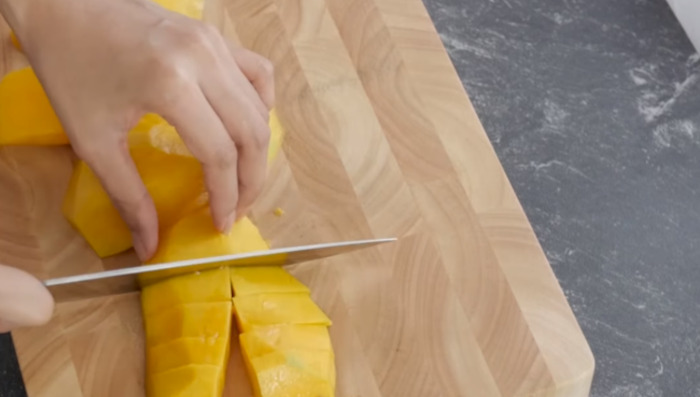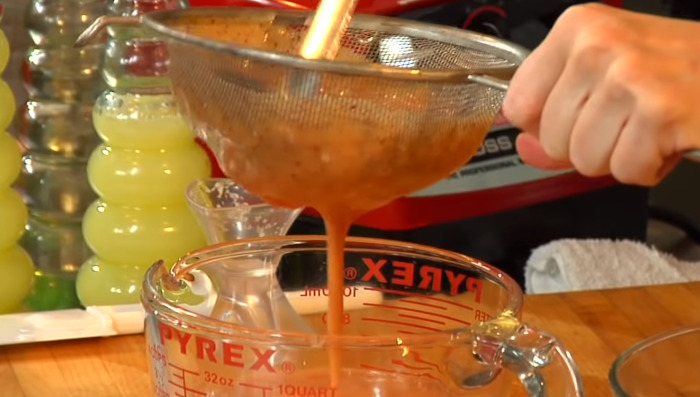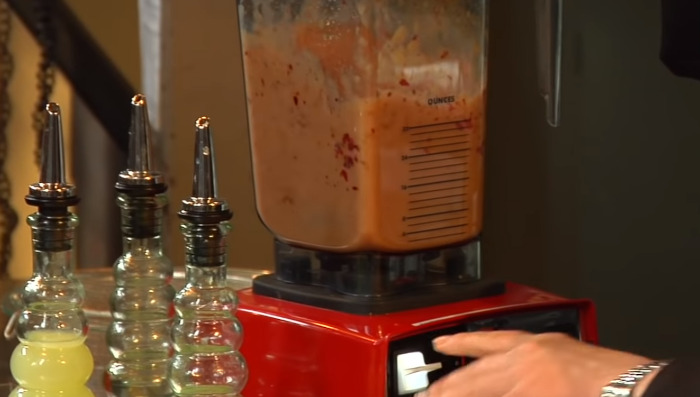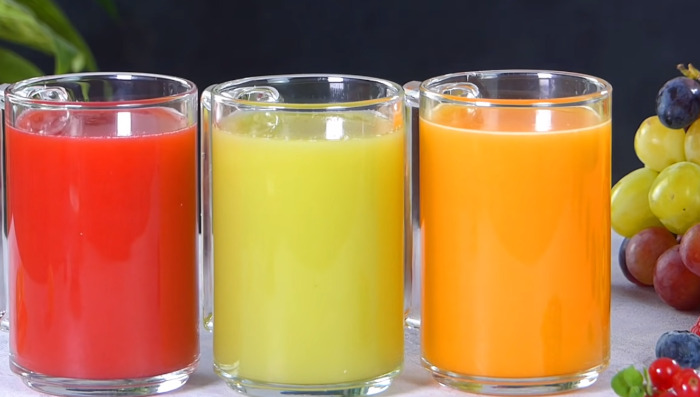Fruit puree, a smooth and thick liquid derived from cooked or blended fruit, offers a versatile ingredient for both culinary and health-conscious purposes. With a concentration of vitamins, minerals, and antioxidants, fruit purees are a nutritious addition to various dishes and drinks. They can be made from a diverse range of fruits, such as berries, apples, peaches, and mangoes.
These vibrant purees act as natural sweeteners, enhancing the flavor profile of recipes without the need for added sugars. For instance, in the case of berry puree, a mix of berries like strawberries, blueberries, and raspberries creates a dynamic burst of fruity goodness. While certain fruits require preparation, like removing stems or peeling, the process is straightforward and yields satisfying results.
Fruit purees find their place in various culinary applications, from baking and smoothies to yogurt and sauces. Their high fiber content supports digestion and can aid in managing cravings. As an expert content writer, I’m here to provide you with accurate and reliable information, ensuring you make informed choices in your culinary endeavors. Remember, whether you’re a seasoned chef or an aspiring home cook, fruit purees can be your creative companion in the kitchen.
How to make fruit puree?
Creating delectable fruit puree is an art that blends simplicity with taste. Follow these expert-guided steps to craft your own flavorful fruit puree:
- Select the Fruit: Choose ripe and fresh fruits such as berries, peaches, or apples. The quality of the fruit greatly influences the final taste of your puree.
- Wash and Prepare: Rinse the fruit under cold water to remove any dirt. Depending on the fruit, peel and pit as necessary.
- Cut into Pieces: Slice the fruit into small, manageable pieces. This helps in faster cooking and blending.

- Cook the Fruit: In a saucepan, add a touch of water and bring it to a gentle simmer. Add the fruit pieces and let them cook until they soften. This enhances the fruit’s natural sweetness.
- Blend to Perfection: Once the fruit is soft, transfer it to a blender or food processor. Blend until you achieve a smooth consistency. For added creaminess, consider including a splash of yogurt or milk.
- Strain (Optional): If desired, strain the puree through a fine sieve to remove any unwanted seeds or pulp. This step adds finesse to the texture.

- Sweeten if Needed: Taste the puree and add a hint of sweetness, like honey or maple syrup, if required.
- Cool and Store: Let the puree cool down before transferring it to airtight containers. Refrigerate for later use or freeze in portions for extended shelf life.
How to Add Pureed Fruits to Fresh Juice?
Elevate the allure of your fresh juices by infusing them with the delightful essence of pureed fruits. This seamless process, guided by expert know-how, results in a symphony of flavors that dance on your palate:
- Prepare the Fruit Puree: Begin by crafting a velvety fruit puree using your favorite fruits. Refer to our earlier steps for creating a smooth and tantalizing puree.
- Select Your Juice Base: Choose a complementary fresh juice as your base. Opt for classics like orange, apple, or pineapple juice to complement the puree’s essence.
- Measure and Mix: Determine the desired ratio of puree to juice. A general guideline is one part puree to two parts juice. Adjust based on your preference for intensity.
- Blend with Precision: Combine the puree and juice in a blender. Ensure thorough blending to achieve a harmonious fusion of flavors.

- Fine-Tune Sweetness: Taste the concoction and fine-tune the sweetness if needed. Add a touch of natural sweeteners like agave or honey to balance the flavors.
- Strain for Excellence: Strain the mixture through a sieve to capture any lingering pulp or seeds. This step contributes to the velvety texture of the final beverage.
- Chill and Savor: Refrigerate the blend until chilled. When ready, pour into your favorite glass, garnish as desired, and savor the symphony of taste and refreshment.
- Experiment and Discover: Don’t be afraid to experiment with various fruit and juice combinations. From berry-infused lemonades to tropical mango medleys, the possibilities are limitless.
Health benefits of fruit puree:
Indulging in fruit purees offers a treasure trove of health benefits that tantalize your taste buds while nourishing your body. Discover the wholesome advantages that await:

- Vitamin-Rich Delight: Fruit purees brim with vitamins, infusing your diet with essential nutrients like vitamin C, A, and various B vitamins. These vitamins support your immune system, skin health, and overall vitality.
- Dietary Fiber Boost: The natural fiber content in fruit purees aids digestion and promotes gut health. Fiber keeps your digestive system running smoothly while helping control blood sugar levels.
- Antioxidant Powerhouse: Bursting with antioxidants, fruit purees combat oxidative stress and inflammation in the body. These protective compounds contribute to reducing the risk of chronic diseases.
- Low-Calorie Treat: Fruit purees are a delectable way to enjoy the lusciousness of fruits without excessive calories. Their lower calorie content compared to whole fruits makes them an excellent choice for weight management.
- Mineral Marvel: Fruit purees offer an array of essential minerals like potassium, magnesium, and calcium. These minerals play a pivotal role in maintaining heart health, bone strength, and muscle function.
- Natural Energy Source: The natural sugars present in fruit purees provide a sustainable energy source that revitalizes your body without the crashes associated with processed sugars.
- Hydration Helper: With their high water content, fruit purees contribute to your daily hydration goals. Proper hydration supports various bodily functions and enhances overall well-being.
- Chronic Disease Defense: Regular consumption of fruit purees has been linked to a reduced risk of chronic conditions such as heart disease, diabetes, and certain cancers.
What are the uses of fruit puree?
These delicious concoctions find a multitude of uses that can elevate your dishes and refresh your palate. Here’s how:
- Beverage Brilliance: Blend fruit purees into refreshing beverages such as smoothies, mocktails, and cocktails. Their natural sweetness and vibrant colors add a delightful twist to your drinks.
- Dessert Delight: Elevate your desserts by incorporating fruit purees into ice creams, sorbets, yogurts, and puddings. Their intense flavors infuse sweetness without overpowering.

- Savory Sensation: Don’t limit fruit purees to just sweet treats; they also complement savory dishes. Create tantalizing sauces, marinades, and glazes for meats, fish, and vegetables.
- Baking Magic: Infuse baked goods like cakes, muffins, and bread with the richness of fruit purees. They not only add moisture but also impart unique flavors to your creations.
- Breakfast Bliss: Start your day with a burst of energy by adding fruit purees to oatmeal, yogurt parfaits, and pancakes. The natural sugars provide a nutritious morning boost.
- Gourmet Garnish: Use fruit purees to create decorative swirls on plates, enhancing the visual appeal of your dishes. These vibrant accents can turn simple meals into gourmet presentations.
- Custom Condiments: Craft custom jams, jellies, and chutneys with fruit purees. Experiment with flavor combinations to create condiments that tantalize your taste buds.
- Nutrient-Rich Babies: For a healthy start, introduce infants to the world of solids by incorporating fruit purees into their diet. The richness of vitamins and minerals aids in their growth and development.
Best fruits for pureeing:
Here are the best fruits for pureeing:
- Bananas: The creamy texture and natural sweetness of bananas make them a perfect base for smooth and luscious purees.
- Mangoes: With their tropical essence and vibrant color, mangoes create a delightful puree that adds a touch of exotic flair to your dishes.
- Berries: Blueberries, strawberries, raspberries, and blackberries lend their intense flavors and vibrant hues, perfect for both sweet and savory applications.

- Peaches: Juicy and fragrant peaches blend into a velvety puree that captures the essence of summer in every spoonful.
- Pears: Their delicate sweetness and mild flavor make pears a versatile choice for purees that can complement a range of dishes.
- Apples: Whether used alone or mixed with spices, apples bring a comforting and familiar taste to your purees.
- Pineapple: The zesty tang of pineapple adds a refreshing twist to your purees, infusing a burst of tropical flavor.
- Avocado: Creamy and nutrient-rich, avocados create a unique puree that works well in both sweet and savory applications.
- Papaya: The buttery texture and tropical sweetness of papaya lend themselves beautifully to smooth purees.
- Kiwi: Kiwi purees offer a bright and tangy flavor that can be a delightful addition to various dishes.
Conclusion:
In the world of culinary creativity, fruit purees stand as versatile and vibrant ingredients that can transform dishes from ordinary to extraordinary. By understanding the art of crafting these luscious concoctions, you unlock a realm of flavors and possibilities that can tantalize your taste buds and captivate your guests.From the process of creating velvety purees to the infusion of health benefits and the myriad uses they offer, your culinary journey takes a delightful turn. Adding pureed fruits to fresh juices not only enhances their nutritional value but also introduces a symphony of tastes that can elevate your beverages to new heights.
Remember, the best fruits for pureeing offer an array of colors, textures, and flavors that can make every dish a culinary masterpiece. Whether you’re concocting sweet treats, savory delights, or refreshing beverages, the magic of fruit purees lies in their ability to enrich your creations with a burst of natural goodness. So, embark on this journey armed with the knowledge gained, and let the world of fruit purees amplify your culinary repertoire.
FAQs:
What Does Puree Food Look Like?
When you envision pureed food, picture a texture that’s smooth, velvety, and easily spreadable. It’s a culinary technique that involves transforming whole ingredients into a consistent paste-like form. This process enhances flavors and makes dishes more accessible, especially for those with swallowing difficulties or seeking a smoother eating experience. Imagine the silky appeal of pureed fruits and vegetables, providing a concentrated burst of flavor in every bite. As a kitchen enthusiast, you’ll appreciate how pureed foods maintain their original essence while presenting in a visually appealing and palatable manner.
Is Pureed Fruit Really Good For You?
You might wonder, “Is pureed fruit truly beneficial for your health?” As someone who enjoys culinary exploration, I assure you that pureed fruit retains its inherent nutrients, offering a convenient way to harness vitamins, minerals, and antioxidants. Embrace the natural sweetness of purees without concerns of added sugars, as they’re recognized differently by regulatory standards. Emerging evidence points to the potential advantages of incorporating pureed fruits into your daily routine. These include potential reductions in the risk of conditions like high blood pressure, heart ailments, diabetes, and more. By integrating these nutrient-rich delights, you’re taking a step toward a healthier lifestyle.
Related Read: The Best Ways Of Storing Fresh Juice







